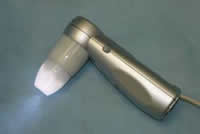Evaluation for Hair Transplant Surgery: Density and Miniaturization
Robert M. Bernstein, M.D. (New York, NY)
Evaluating a person with clear-cut androgenetic alopecia for a hair transplant generally consists of the physician determining which Norwood Classification a person fits into, designing a hair line, examining the donor area, and then deciding upon the appropriate number of grafts. The issue of the patient’s measured hair density and donor miniaturization are rarely called into question. However, donor density and miniaturization are critical variables in deciding who is a good candidate for hair transplant surgery and for determining how many grafts are appropriate for a particular patient.
More about
Hair Transplants
As recently as the mid-1990s, hair transplants were routinely performed using large grafts that were transplanted in many small sessions, often spaced out over years. The cosmetic results of these procedures were invariably unnatural and the coverage incomplete. Patients, unhappy with the results, went from doctor to doctor in search of a solution. As a result, the hair transplant doctors who performed the patient’s initial hair transplantation procedures rarely saw the long-term results/consequences of their work.
A procedure for using large numbers of grafts cut to size was first described by Carlos Uebel in the early 1980s, but did not catch on in the US. In the early 1990s, Dr. Rassman began popularizing “Megasessions,” the use of large numbers of very small grafts (mini-micro grafts) in a single session. This technique allowed the entire hair restoration to be completed in just a few sessions. As a result, doctors were able to more readily observe the final products of their efforts. The observant hair restoration surgeon noted that a person’s limited donor supply kept many patients from achieving their desired goals.
This led us to begin to formulate a “master plan” for patients in an attempt to match up the patient’s goals with what actually could be accomplished with hair transplantation surgery. It seems like an obvious idea to us now, but it was novel at the time. An integral part of this plan was to actually measure a patient’s donor density in order to assess the patient’s donor supply prior to the first hair transplant — so the planning could be realistic.

Digital Imaging Densitometer
Dr. Rassman used an instrument (called the “Hair Densitometer”) during the consultation that could actually count the number of hairs in a defined area on the scalp. The Densitometer was used to quantify a patient’s donor density, estimate the patient’s total donor reserves, and help predict the change in reserves over subsequent transplant sessions. The Densitometer has now been replaced by digital imaging technology which allows the patient to visualize his or her donor area projected on a screen, so it can be seen at the same time as the doctor.
With the introduction of Follicular Unit Transplantation (FUT) in 1995, we showed that follicular unit composition (the number of hairs each individual unit contained) and follicular unit density (the spacing between units), rather than hair density alone, was important in the assessment of the donor supply and in the overall surgical planning. This shift from using grafts containing varying number of hairs to those containing individual follicular units was a revolutionary change in the way hair transplant surgery was both thought about and performed.
Follicular units are comprised of thick hair, called terminal hairs, that have a very uniform diameter and fine hair, referred to as vellous. Each unit generally has one to four terminal hairs and, occasionally, a vellous hair. In male pattern alopecia, the action of DHT causes individual hairs in some follicular units to begin to decrease in size (diameter and length) until they eventually disappeared. This process is called “miniaturization.”
Unlike vellous hairs, which are uniformly fine, miniaturized hairs will be in varying stages of involution and thus be of varying diameters. These changes, initially detectable only through densitometry, will eventually cause visible thinning in affected areas on the front and top of the scalp. As more hairs in each follicular unit are affected, the process of miniaturization may lead to complete baldness in the involved scalp.
Less commonly, the process of miniaturization can involve the donor area in the back and sides of a person’s scalp. When it affects a person’s donor area, it will reduce the available donor hair supply and decrease the chances that a patient will be a candidate for a hair transplant. Although miniaturization in the donor area is relatively uncommon in men, it is the norm in women experiencing hair loss. This partly explains why fewer women are candidates for surgical hair restoration as compared to men.
Because densitometry is more sensitive than the naked eye in detecting miniaturization and is the only way that hair density can be accurately measured, it should form the basis of the hair loss exam and is a critical tool in determining which persons are candidates for hair transplantation. It is also very useful in planning the surgery since it gives the doctor a great deal of information about the available donor supply and the quality of a person’s follicular unit grafts.
For more information about the usefulness of densitometry in the diagnosis and treatment of hair loss, please refer to the publication Hair Transplant Evaluation.




